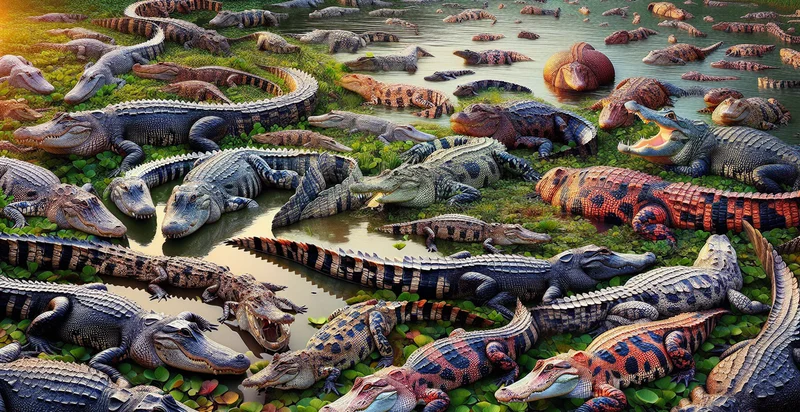Identify alligator species
using AI
Below is a free classifier to identify alligator species. Just upload your image, and our AI will predict which species of alligator it is - in just seconds.

Contact us for API access
Or, use Nyckel to build highly-accurate custom classifiers in just minutes. No PhD required.
Get started
import nyckel
credentials = nyckel.Credentials("YOUR_CLIENT_ID", "YOUR_CLIENT_SECRET")
nyckel.invoke("alligator-species-identifier", "your_image_url", credentials)
fetch('https://www.nyckel.com/v1/functions/alligator-species-identifier/invoke', {
method: 'POST',
headers: {
'Authorization': 'Bearer ' + 'YOUR_BEARER_TOKEN',
'Content-Type': 'application/json',
},
body: JSON.stringify(
{"data": "your_image_url"}
)
})
.then(response => response.json())
.then(data => console.log(data));
curl -X POST \
-H "Content-Type: application/json" \
-H "Authorization: Bearer YOUR_BEARER_TOKEN" \
-d '{"data": "your_image_url"}' \
https://www.nyckel.com/v1/functions/alligator-species-identifier/invoke
How this classifier works
To start, upload your image. Our AI tool will then predict which species of alligator it is.
This pretrained image model uses a Nyckel-created dataset and has 10 labels, including American Alligator and Chinese Alligator.
We'll also show a confidence score (the higher the number, the more confident the AI model is around which species of alligator it is).
Whether you're just curious or building alligator species detection into your application, we hope our classifier proves helpful.
Related Classifiers
Need to identify alligator species at scale?
Get API or Zapier access to this classifier for free. It's perfect for:
- Wildlife Management: Wildlife organizations can use this function to identify different alligator species in specified areas. This could assist in conservation efforts, population tracking, and identifying specific alligator species in need of protection.
- Alligator Farming: Farmers who breed alligators can use it to identify and sort different species in their farms, helping streamline their operations. This can also aid in selective breeding strategies to maximize farm yields.
- Museum and Education: Natural history museums, zoos, and educational institutions can use this function to accurately classify alligator species features in exhibits or during field studies, enhancing the educational value of their presentations.
- Scientific Research: With correct identification of alligator species, researchers can ensure accuracy in their studies, leading to more precise and valuable findings in the fields of evolutionary biology, ecology, and conservation.
- Media Production: Media companies producing nature documentaries or wildlife programs could use 'alligator species' identifier for accurate content creation and species differentiation.
- Import/Export Regulation: Government agencies can use this function to enforce wildlife trading regulations, by accurately identifying species of alligators in shipments. This promotes legal wildlife trade and reduces trafficking of protected species.
- Tourism and Adventure Companies: Tour operators offering guided swamp tours or wildlife encounters can use this function to educate the tourists about different species of alligators they encounter during their visits, enhancing the tourists' experience and understanding of the ecosystem.


